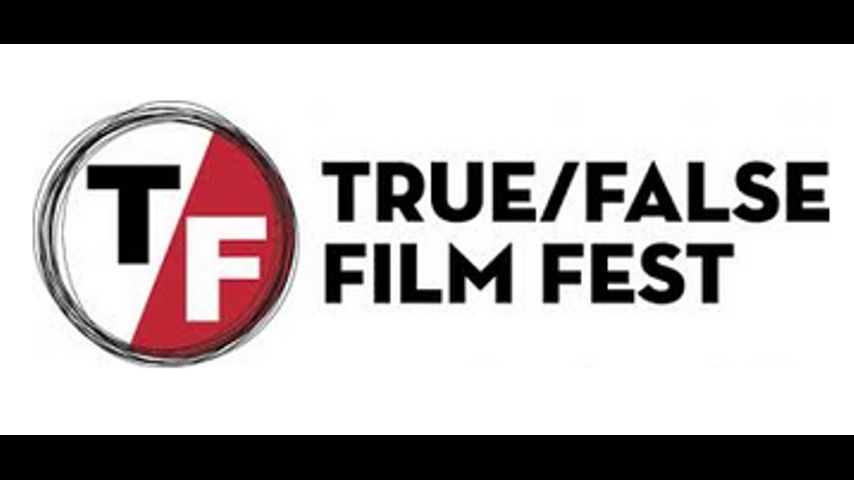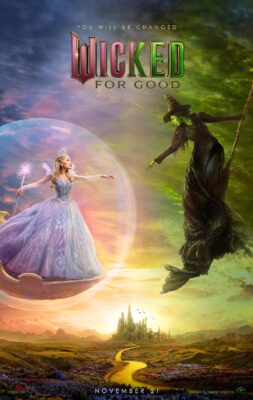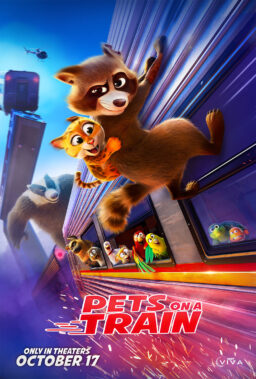Even though it’s only my second year attending the True/False film festival, I felt a sense of homecoming when I landed in Columbia, Missouri. The Midwestern college town invites this feeling for me, anyway—I cherish traversable places rife with record stores, coffee shops, bars, and other accoutrements of undergraduate life, especially since my alma mater, as pleasant a place it was, didn’t offer much in that regard—but the festival itself provides a comfortable respite from the ignoble pressures of the modern world. It’s here that a diverse community of filmmakers, critics, teachers, musicians, and, of course, civilians gather to engage with the best in nonfiction films, ones that attempt to push the form forward and shed light on ignored corners of the human experience.
It’s admirable work just to exhibit this kind of rigorous filmmaking at all, but thankfully True/False doesn’t stop there. The festival all but demands its community to constantly interrogate the films by examining and questioning methodology, process, aesthetics, etc. Aided by academic panels and extended discussions with filmmakers (“field sessions”), True/False pushes its audiences to perform some intellectual heavy lifting after the theater lights go up. It certainly helps that the festival has a healthy disregard for market pressures and industry shenanigans, affording it the opportunity to openly embrace its collegial heart. Nevertheless, True/False puts forth an ideal model for a small American film festival that is difficult to replicate.
On the first official day of the festival, I attended a panel on nonfiction criticism moderated by critic and Museum of the Moving Image curator Eric Hynes. He, along with panelists Nick Pinkerton, Logan Hill, and Alissa Wilkinson, examined the historical dearth of critical writing on nonfiction films. Nothing was solved, but everything was addressed: an economic system that hinders this in-depth writing to flourish in the mainstream; the widespread media illiteracy that renders the public ill-equipped to engage with creative documentary filmmaking; the proliferation and subsidization of middling documentaries that take up streaming space and accomplish little else; and, of course, the prevalence of lazy critical writing that unintentionally limits the form in the eyes of the public.
It was a whirlwind hour-long session that offered some to vent their frustrations in a sympathetic space. By the end, I felt mildly depressed for all the obvious reasons—an inefficient gig economy, criticism’s uphill battle to thrive in the 21st century, the dark menace of late capitalism, etc.—but also strangely motivated. The first step to bucking detrimental cultural trends is to embody what you want to see in the world and not to capitulate to reductive ideas enervating in the culture. In these dispatches, I will do my best to live up to that potential.

Wednesday
This year, True/False presented the fifth edition of its Neither/Nor series, which examines historical precedents of filmmaking that combines fiction and non-fiction. Ashley Clark, the senior programmer at the Brooklyn Academy of Music, programmed the series to showcase four films from the Black Audio Film Collective, a group of Black British artists that investigated black identity amidst the social unrest of 1980s Britain. On the day before the festival began, True/False hosted a free screening of the Collective’s debut film, John Akomfrah’s “Handsworth Songs.”
The film offers an account of the 1985 riots in the Handsworth district of Birmingham from the perspective of black and Asian immigrants in the area whose narratives were marginalized by the British press. First aired on Channel 4 in 1986, “Handsworth Songs” garnered acclaim for its innovative filmmaking that combined a multi-layered sound design with an experimental narrative that features a diverse array of visual techniques—firsthand interviews, newsreel footage, archival photographs, etc. “Handsworth Songs” also sparked debate and controversy amongst intellectuals and social theorists, culminating in a debate in the Guardian between Salman Rushdie and Stuart Hall regarding the film’s merits.
I had never heard of the Black Audio Film Collective before the screening, an unfortunate oversight on my part, and also somewhat indicative of whose voices film history tends to privilege. With that being said, “Handsworth Songs” made a strong impression on me, not so much because of its content, though frustratingly topical it might be, and more so because of its form. Akomfrah and his collaborators in the BAFC successfully craft a post-colonial identity through strands of generational history and totems of present-day struggle, the latter of which extends to the film’s sound, influenced by the improvisational rhythms of roots and dub music. With “Handsworth Songs,” Akomfrah sought to redefine blackness in British culture for a new generation as a reaction against conservative Thatcherite policies along with the respectability politics of their immigrant parents. In turn, the Collective demonstrated that the best way to examine the noxious ideologies in the culture was to trace their historical lineage. As a middle-aged black woman tells a British reporter, “There are no stories in the riots. Only the ghosts of other stories.”

Thursday
Vérité portraits often gain their power from their subjects’ unconscious performances. When author and subject establish enough trust, a subject can “play” to the camera without necessarily “acting” for it. Erick Stoll and Chase Whiteside’s “América” succeeds in part because their subjects are born entertainers. Rodrigo, Diego, and Bruno are three brothers who perform as stilt-walkers and Elvis impersonators for crowds when they’re not tending to the family’s agriculture business. They have natural screen presence, constantly playacting even in intimate, uncomfortable situations, which serves the film well considering Stoll and Whiteside capture the brothers in a time of crisis. When their father lands in jail for elder abuse, the three siblings come together to take care of their ailing grandmother, América. The brothers’ gentle disposition help their grandmother through dark periods when she can’t remember their identities, and their infectious energy make difficult tasks, such as bathing her and helping her complete her bowel movements, a little bit easier.
Shot over the course of three years, Stoll and Whiteside skillfully capture the ups and downs of elder care by focusing on process as much as portraiture, illustrating how day-to-day responsibilities can inevitably fray strong relationships. The brothers adopt various caretaker roles—Diego and Bruno are patient and sensitive with their grandmother, while Rodrigo, who longs to embark on his own life with his girlfriend, feels more encumbered by her presence. “América” is at its best when the brothers are in conflict; Stoll and Whiteside bring a panicked energy to the film when tensions flare up amidst the group either over how best to take care of their grandmother, or the seemingly never-ending legal battle to release their father from prison. Though clear-eyed about the realities of aging, Stoll and Whiteside imbue “América” with an off-handed charm, whether it’s by framing the title character in tender close-up, or by depicting childish fights between the adults. All family inevitably becomes a burden, but the approach to carrying it can make all the difference.
Khalik Allah’s “Black Mother,” his follow-up to his Harlem-set debut “Field Niggas,” brings his seductive, spiritually rooted sensibility to his family’s home country of Jamaica. Allah examines the island’s fraught cultural and political history through a series of compassionate interactions with the populace, covering topics like religion, sex work, colorism, and even food science. Like “Field Niggas,” Allah employs an asynchronous soundtrack to accompany his oneiric imagery; voices of the nation hold court while audiences are invited to reside in a dreamlike space between sound and image, as the latter lags slightly behind the former. In a post-screening Q&A, Allah, a renowned photographer, described his soundscape as a gallery in which to “hang” his footage by mentally linking imagery and audio themselves.
Allah’s visual work in “Black Mother” is typically sublime. Individual shots of Jamaican street dwellers or lush swaths of nature make statements on their own. Beyond the shot selection, however, Allah juxtaposes contrasts in Jamaica’s diverse landscape—city and country, sunlight and dark urban streets, birth and death, etc. The cacophony of voices in the audio offer plenty in terms of cultural anthropology and pointed observation, but I’ll confess to struggling with some of the film’s internal rhythms. Though “Black Mother” has a tight structure connected to the three trimesters of pregnancy, and features a personal narrative involving Allah’s grandfather, there are sections when the film feels unproductively restless and occasionally dips into tedium. At its best, however, Allah uses “Black Mother” as both a tribute to his heritage and a tool to craft a distinctly diasporic identity in a postcolonial world. (In many ways, the film is in direct conversation with the work by the Black Audio Film Collective.) Rarely does a sociocultural tour also feel like a spiritual reckoning.
Sometimes a documentary can coast on compelling footage even if it’s not particularly well assembled. Leilah Weinraub’s “SHAKEDOWN” has the unfortunate problem of featuring compelling footage shot in a black lesbian strip club in Los Angeles that paradoxically bores the longer it’s on screen. “SHAKEDOWN” chronicles the history of the club by the same name as well as the various exotic entertainers that passed through the doors and captivated the hearts, minds, and loins of women in the early 2000s. Weinraub frequently filmed in the club during the height of its popularity, and the grainy, explicit footage has a sense of immediacy that can’t be completely ignored. Yet, “SHAKEDOWN” mostly lumbers from scene to scene, intermixed with a handful of candid interviews with the dancers and stills of old fliers and advertisements. There’s no real rhythm to the proceedings, and the footage, though proudly explicit, doesn’t quite work as pure spectacle, either. Weinraub positions SHAKEDOWN as the intersection of race and sexuality, a place for women of color to explore feelings they were forced to repress or ignore for years. But her film only occasionally stabs at that goal, and beyond that, it doesn’t function well as an observational portrait. Weinraub’s intentions are admirable, and the club has characters and history in spades, but perhaps a more controlled hand would have brought “SHAKEDOWN” to life.

Friday
Editor Brian Tallerico covered Robert Greene’s latest feature “Bisbee ‘17” and Tim Wardle’s “Three Identical Strangers” at the Sundance Film Festival, so I won’t spend too much time rehashing their plots or detailing their respective strengths and flaws, but I did want to say a few words about each of the films.
As much as I’ve respected Greene’s work in the past, especially his ability to suss out great, complex performances from actors and civilians amidst various stages of playacting, I will admit to feeling a certain amount of distance from his work. I certainly appreciated the headiness of films like “Actress” and “Kate Plays Christine,” especially how they infuse elements of melodrama into a documentary framework, as well as the layers of performativity on display, but I never quite connected to the films themselves. However, I engaged with “Bisbee ’17” like I hadn’t with Greene’s other films. Though it arguably represents the director’s most conventional film to date, with a clear narrative through line complete with rising action and climax, its classical narrative wonderfully grounds Greene’s pet interests in a tangible historical moment. Many critics have pointed out the contemporary parallels between the Bisbee deportation and ICE tactics, but the relevancy extends even further than that. The ideological divide between Bisbee citizens who want to reckon with their history and those who want to explain it away mirrors the conversations around racism, sexual harassment, gun control, and any number of issues plaguing the nation. The gulf in Bisbee adds potency to the climactic recreation of the deportation, pushing contemporaries to play out the actions of their recent forebearers and consider fundamental questions about patriotism. What does “American” mean anyway if workers seeking safer working conditions and higher wages can threaten the very notion itself?
There are certain filmmaking choices in “Three Identical Strangers” that are maddening, particularly the heavy-handed score and Wardle’s insistence to repeat archival footage in different contexts as if we might forget what we’ve just seen. But the film’s core story is so relentlessly wild that those issues don’t matter that much in the aggregate. Wardle neatly plays into the happy coincidence angle of the brothers’ reconciliation, just like the widespread media coverage at the time, before peeling back layers of the story to illustrate that, of course, it wasn’t all just happenstance. Some of the dramatizations are a bit sub-Errol Morris for my taste, but the archival footage of the brothers’ time in the spotlight contrasted with Wardle’s contemporary footage of their subsequent estrangement has emotional weight. A conventional, talking head crowdpleaser it may be, “Three Identical Strangers” works because the history itself, as well as its behavioral and genetic implications, stands on its own.
I also wanted to write a few words about Sandi Tan’s fantastic memoir documentary “Shirkers,” which assistant editor Nick Allen covered at Sundance, because it was one of the very best films I saw at True/False. “Shirkers” chronicles Tan’s adolescence as a restless teen eager to become a filmmaker, and the subsequent history of her lost feature film that was poised to break open Singapore’s independent film scene to the world. While the story of “Shirkers” is compelling in its own right, Tan’s film also functions wonderfully as a tribute to a time when there was a shared counter-cultural language that spanned the globe. Tan and her best friend Jasmine Ng worshiped at the alter of Western independent film and music because they opened up new worlds beyond the strict hands of Singaporean culture. Tan and Ng were rebels not just because they chewed gum, which was banned in Singapore at the time, but because they sought to create their own little slice of weirdo culture influenced by the heavyweights at their disposal—Jarmusch, Godard, the Velvets, etc.—but primarily indebted to their own sensibilities. It made me long for a time when there wasn’t endless cultural fragmentation, but rather an unofficial cultural syllabus that when studied rendered you a person worth knowing. Boys’ clubs turned it into another form of dick measuring, but people like Tan and Ng absorbed it as a means of immersion into the world of “cool.” In an age when “cool” defaults to whatever is most accessible and most popular, “Shirkers” is a delightful look at a time when a little offbeat mystery went a long way.
“Shirkers” will be coming soon to a Netflix library near you, and while it’s nice it will be available to stream, it’s a damn shame that Tan’s film will never have a theatrical life of its own so that others can share in that productive remembrance. Instead, it will be another doc buried in the streaming annals next to some Vine star’s vanity project, just waiting for some enterprising young rebel to find it and soak up its wisdom.












